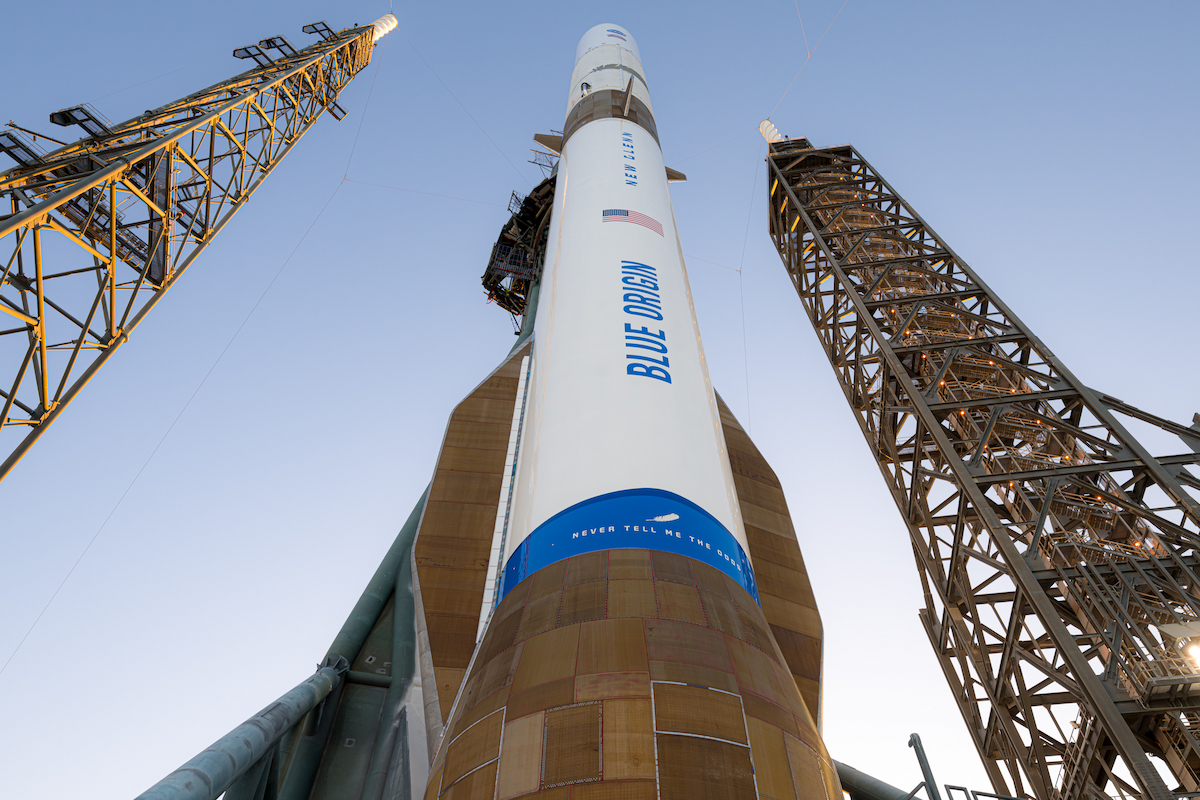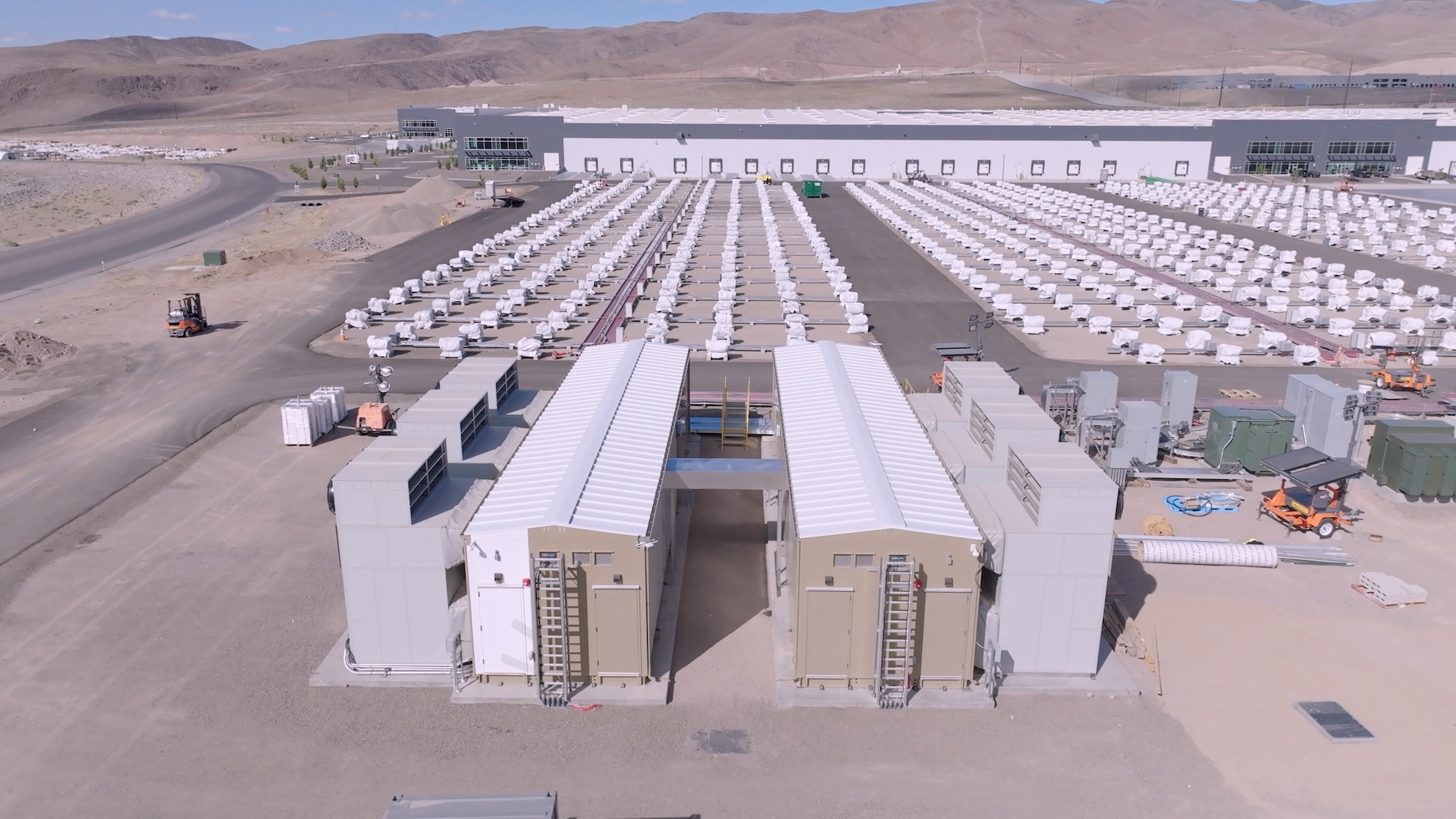
Blue Origin, the space venture founded by Amazon billionaire Jeff Bezos, recently announced the postponement of the second orbital test flight for its colossal New Glenn rocket. Originally slated for Sunday afternoon, the ambitious mission faced a confluence of challenges, including adverse weather conditions, minor technical glitches with launch pad infrastructure, and an unexpected intrusion by a cruise ship into the designated flight path. The company quickly reset its sights, aiming for another launch attempt on Wednesday, November 12, from its facilities in Cape Canaveral, Florida. This latest delay underscores the intricate dance of variables inherent in modern rocket launches and highlights the significant hurdles Blue Origin must clear to establish New Glenn as a reliable workhorse in the increasingly competitive commercial space industry.
A Series of Unforeseen Obstacles
The initial launch window for New Glenn’s second mission was scheduled to open at 2:45 p.m. ET on Sunday, offering approximately 90 minutes for the launch team to achieve liftoff. However, as the countdown progressed, the meticulously planned sequence began to unravel. Meteorological conditions around Space Launch Complex 36 (SLC-36) in Cape Canaveral became a primary concern. Launch operations are highly sensitive to weather phenomena such as high winds, lightning, and precipitation, which can pose risks to the vehicle, ground crew, and surrounding areas. Even seemingly minor deviations from acceptable parameters can necessitate a scrub for safety.
Compounding the weather challenges were several minor issues detected with the launch pad equipment. While specific details were not immediately disclosed by Blue Origin, such technical anomalies can range from sensor malfunctions to pressure irregularities in propellant lines or issues with ground support systems. In an industry where precision and redundancy are paramount, even small discrepancies can trigger a halt, as engineers prioritize mission success and crew safety above all else.
The final, and perhaps most unusual, factor contributing to the scrub was the appearance of a cruise ship within the defined exclusion zone of the rocket’s flight path. For every launch, a vast area of airspace and sea is cleared to ensure public safety in the event of an anomaly or falling debris. Marine traffic, especially large vessels, can take considerable time to move out of these restricted zones. Although the ship was reportedly expected to clear the area before the launch window’s close, the cumulative effect of the weather and equipment concerns, combined with the range intrusion, ultimately led Blue Origin to make the prudent decision to stand down for the day. This incident serves as a stark reminder of the complex logistics involved in managing a launch range, which often extends far beyond the immediate launch site.
The High Stakes of New Glenn’s Second Flight
This upcoming mission holds immense strategic importance for Blue Origin, representing a critical juncture in the company’s long-term vision for space exploration and commerce. Primarily, it is an opportunity to validate the full reusability concept of the New Glenn rocket. During its inaugural launch in January, the New Glenn successfully achieved orbital insertion, a significant milestone for any new rocket. However, the first stage booster, designed to return to Earth for vertical landing on a drone ship in the Atlantic Ocean, unfortunately experienced an anomaly and was lost. The ability to reliably land and reuse the booster is fundamental to Blue Origin’s business model, promising to dramatically reduce launch costs and enable a higher flight cadence, much like its competitor, SpaceX, has demonstrated with its Falcon 9 rocket. A successful booster landing on this second flight would be a powerful demonstration of Blue Origin’s engineering prowess and a crucial step towards realizing its economic aspirations.
Beyond proving reusability, this mission also marks New Glenn’s first commercial payload delivery. The rocket is slated to carry NASA’s ESCAPADE (Escape and Plasma Acceleration and Dynamics Explorers) spacecraft, a dual-satellite mission designed to study Mars’ unique hybrid magnetosphere. This mission is part of NASA’s Small Innovative Missions for Planetary Exploration (SIMPLEx) program, which utilizes smaller, more cost-effective spacecraft to achieve high-priority science objectives. Additionally, New Glenn will deploy a technology demonstrator for Viasat, an aerospace communications company, as part of another NASA project. Successfully delivering these valuable payloads to their precise orbits is paramount for Blue Origin to build trust and secure future contracts in the fiercely competitive commercial launch market. Demonstrating reliability and cost-effectiveness through reusability is key to attracting a wider array of customers, from government agencies to private satellite operators.
Blue Origin’s Journey in the Commercial Space Arena
Founded by Jeff Bezos in 2000, Blue Origin has operated with a philosophy often characterized as "gradatim ferociter" – step by step, ferociously. Unlike some of its contemporaries, the company initially maintained a relatively low public profile, focusing on methodical research and development. Its early efforts centered on the suborbital New Shepard rocket, which has successfully flown numerous payloads and human passengers to the edge of space and back, proving key technologies like vertical takeoff and landing.
New Glenn, named after pioneering American astronaut John Glenn, represents Blue Origin’s ambitious leap into orbital spaceflight. Envisioned as a heavy-lift launch vehicle, it stands nearly 322 feet (98 meters) tall, making it one of the largest rockets ever built. Its first stage is powered by seven BE-4 engines, which also power United Launch Alliance’s (ULA) Vulcan Centaur rocket, another significant player in the commercial launch market. The BE-4 engine’s development itself has been a multi-year endeavor, highlighting the complexity and time investment required for new propulsion systems.
The development of New Glenn has been a protracted process, reflecting the inherent challenges of designing and building a new class of rocket. Blue Origin initially projected a first flight much earlier in the decade, but the project has experienced several delays, pushing back its debut. These postponements are not uncommon in the space industry, where unforeseen technical hurdles, supply chain issues, and rigorous testing requirements can easily extend timelines. The current second flight attempt, initially targeted for earlier this year, has also been subject to multiple slips, further illustrating the intricate nature of bringing such a sophisticated system online. Each delay, while frustrating for stakeholders and observers, is often a calculated decision to ensure the highest probability of mission success and safety.
Blue Origin’s entry into the heavy-lift market places it in direct competition with established players and innovative newcomers. SpaceX, with its highly successful Falcon 9 and Falcon Heavy rockets, and the formidable Starship under development, has set a high bar for reusability and launch cadence. ULA, a joint venture of Lockheed Martin and Boeing, has long been a stalwart of national security and scientific launches, and its new Vulcan Centaur aims to modernize its fleet. Against this backdrop, New Glenn seeks to carve out its own niche, offering a powerful, reusable platform capable of launching diverse payloads, from large constellations of internet satellites to deep-space probes. The success of New Glenn is not just about Blue Origin’s future, but also about diversifying access to space and potentially driving down costs across the entire industry.
Navigating the Complexities of Launch Operations
The recent scrub also touched upon a broader issue facing the commercial space industry: the role of regulatory bodies like the Federal Aviation Administration (FAA). The FAA is responsible for licensing and regulating all commercial space launches and reentries in the United States, ensuring public safety and compliance with international obligations. The original article noted that FAA restrictions related to a government shutdown had been a factor, though Blue Origin worked with the agency to facilitate the re-attempt. This highlights the critical interface between private enterprise and government oversight. Government shutdowns or periods of reduced operational capacity can directly impact launch schedules, as essential personnel for range safety, air traffic control, and licensing may be unavailable. The seamless coordination between launch providers and regulatory bodies is a constant challenge, requiring robust communication and contingency planning.
Moreover, the increasing frequency of launches from coastal facilities like Cape Canaveral introduces growing complexities. Managing airspace and marine traffic for safety zones becomes more challenging as the number of launches from various providers grows. The incident with the cruise ship, while specific to this scrub, illustrates a broader trend where the burgeoning space industry must coexist with other commercial and recreational activities in increasingly busy operational areas. This necessitates advanced tracking systems, clear communication protocols, and potentially more dynamic or flexible range clearance procedures in the future.
Looking Ahead: The Path to Routine Spaceflight
As Blue Origin prepares for the rescheduled launch of New Glenn’s second mission, the global space community watches intently. A successful flight, particularly one that includes the safe return and landing of the first stage booster, would be a monumental achievement for the company. It would validate years of development, billions of dollars in investment, and the dedication of countless engineers and scientists. Such a success would significantly bolster Blue Origin’s credibility, enabling it to aggressively pursue new contracts and solidify its position as a major player in the commercial launch market.
The broader implications extend beyond Blue Origin. A successful, reusable heavy-lift rocket further fuels the ongoing transformation of space access. It promises to make space more affordable, more accessible, and ultimately, more routine. This shift has profound market impacts, enabling new satellite constellations, fostering in-orbit manufacturing, and supporting ambitious lunar and Martian exploration programs. The social and cultural impact is also significant, as increased space activity inspires new generations, drives technological innovation, and reinforces humanity’s inherent drive to explore.
While delays and scrubs are an inherent part of the challenging journey to space, each one offers valuable lessons. Blue Origin’s methodical approach, though sometimes criticized for its pace, emphasizes safety and reliability. The upcoming November 12 attempt is more than just another rocket launch; it is a critical step in a long-term vision, a testament to perseverance, and a key moment in the unfolding narrative of humanity’s expansion into the cosmos. The outcome will undoubtedly shape Blue Origin’s trajectory and contribute significantly to the evolving landscape of commercial spaceflight.





